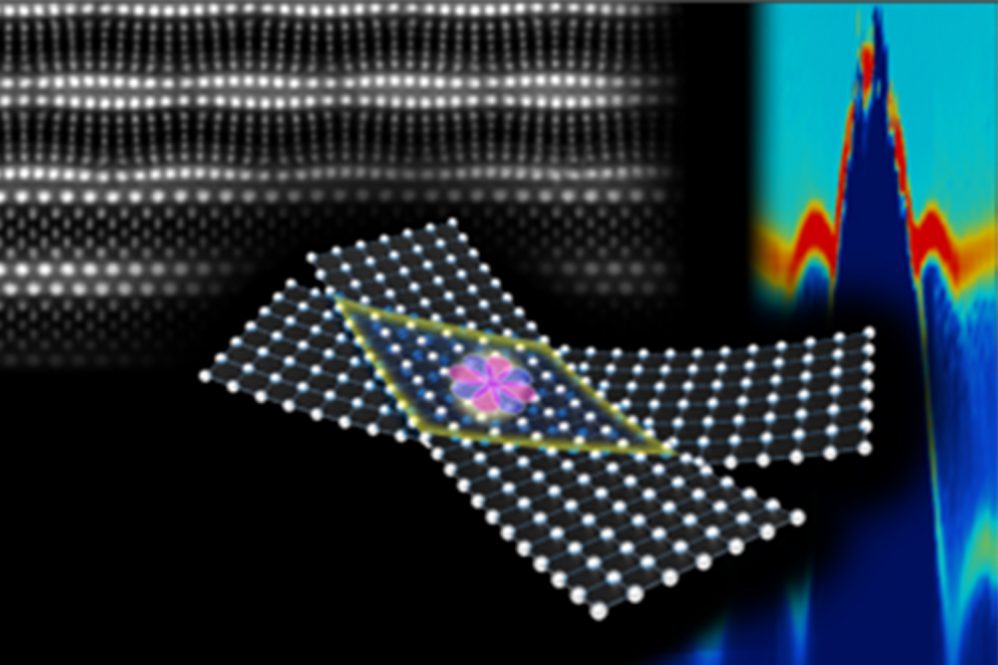Superconductors, which are materials that allow perfect, lossless flow of electrons through them, have intrigued physicists for decades. But most superconductors only exhibit this quantum-mechanical peculiarity at temperatures so low – a few degrees above absolute zero –as to render them impractical. Moreover, exotic forms of superconductivity, some of which have yet to be realized experimentally, may form the building blocks of future quantum technologies.
A research team led by Harvard Professor of Physics and Applied Physics Philip Kim has demonstrated a new strategy for making and manipulating a widely studied class of high-temperature superconductors, called cuprates, clearing a path to engineering new, unusual forms of superconductivity in previously unattainable materials.
The team worked with colleagues at the University of British Columbia led by Marcel Franz and Rutgers University led by Jed Pixley, whose teams previously performed theoretical calculations that accurately predicted the behavior of the cuprate superconductor in a wide range of twist angles. Reconciling the experimental observations with theoretical expectations also required new theory developments reported in the work, performed by UConn Physicist Pavel A. Volkov.
“Cuprates are complex materials that to this day host some of the most intriguing open puzzles in condensed matter physics,” says Volkov. “Taking some of this complexity into account is crucial for understanding the behavior of cuprate-based devices. Constructing models to analyze the experimental data, we could show that outcomes from completely different types of experiments all point to the existence of an exotic form of superconductivity in these devices – time-reversal breaking superconductivity.”
Using a uniquely low-temperature device fabrication method, the researchers report in the journal Science a promising candidate for the world’s first high-temperature, superconducting diode – essentially, a switch that makes current flow in one direction – made out of thin cuprate crystals. Such a device could theoretically fuel fledging industries like quantum computing, which rely on fleeting quantum mechanical phenomena that are difficult to sustain in any meaningful way.
“Our work shows that high-temperature superconducting diodes are, in fact, possible, without application of magnetic fields, and opens new doors of inquiry toward exotic materials study,” says Kim.
Cuprates are copper oxides that, decades ago, upended the physics world by showing they become superconducting at much higher temperatures than theorists had thought possible, “higher” being relative: the current record for a cuprate superconductor is -225 Fahrenheit (130 Kelvin, or -142 Celsius). However, handling these materials without destroying their superconducting phases is extremely complex due to their intricate electronic and structural features.
The team’s experiments were led by S. Y. Frank Zhao, a postdoctoral researcher at MIT. Using an air-free, cryogenic crystal manipulation method in ultrapure argon, Zhao engineered a clean interface between two extremely thin layers of the cuprate bismuth strontium calcium copper oxide, nicknamed BSCCO (“bisco”) by insiders. BSCCO is considered a “high-temperature” superconductor because it starts superconducting at about -288 Fahrenheit (95 Kelvin, or -177 Celsius) – very cold by practical standards, but astonishingly high among superconductors, which typically must be cooled to below -400 Fahrenheit.
Zhao first split the BSCCO into two layers, each one-thousandth the width of a human hair. Then, at -130 Fahrenheit, he stacked the two layers at a 45-degree twist, like an ice cream sandwich with askew wafers, retaining superconductivity at the fragile interface.
The team discovered that the maximum supercurrent that can be passed without resistance through the interface is different depending on the current’s direction. Crucially, the team also demonstrated electronic control over the interfacial quantum state by reversing this polarity. This control was what effectively allowed them to make a switchable, high-temperature superconducting diode – a demonstration of foundational physics that could one day be incorporated into a piece of computing technology, such as a quantum bit.
“These results open a new chapter in the cuprate story – the one where new forms of superconductivity can be realized on demand. Miniaturizing these devices can make them new ingredients in existing quantum computing platforms. Another exciting future prospect is the realization of the elusive topological superconductivity, predicted theoretically in twisted superconductors, a coveted ingredient for fault-tolerant quantum technologies,” says Volkov.
The work in Science also includes collaborators from Brookhaven National Laboratory, Leibniz Institute for Solid State and Materials Research in Germany, Seoul National University in South Korea, and National Institute for Materials Science in Japan.
The research was supported, in part, by the National Science Foundation, the Department of Defense, and the Department of Energy.



